Dam bypass to open endangered Northern Nevada fish spawning grounds cut off for a century
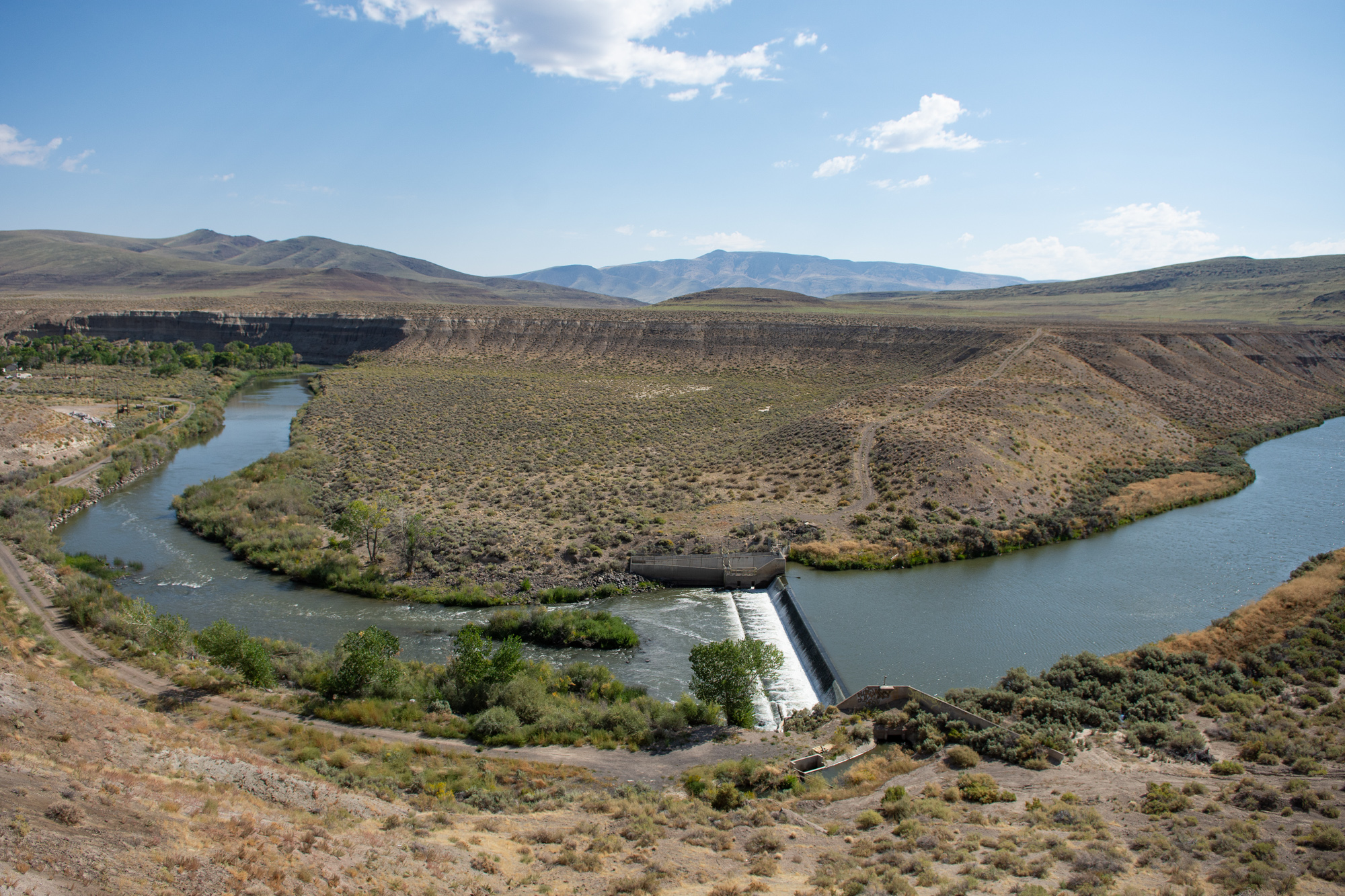
Looking down from the top of a cliff, you can hear the crashing sounds of water as the Truckee River falls over the Numana Dam, an irrigation diversion built in 1917. Under the water, from the perspective of the endangered cui-ui, a large sucker fish endemic to Pyramid Lake, the concrete barrier poses a generational challenge, severing the fish from key spawning ground.
Standing near that cliff, with the dam in the flatlands below, officials broke ground this month on a project to aid fish access to spawning areas upstream, one step in a decades-long recovery effort by the Pyramid Lake Paiute Tribe, whose name is Cui-ui Ticutta, or “cui-ui eaters.” For the first time in a century, the fish passage will help open up 65 miles of river for cui-ui migration.
The tribe has long worked to secure funding for the project, and received nearly $8.3 million from the federal Bipartisan Infrastructure Law to build a rock ramp at Numana Dam. Such ramps are built to emulate the natural river and give fish a path to swim past diversions. It will also aid spawning of the Lahontan cutthroat trout, a fish also interwoven with the tribe’s history.
“The project will expand and improve the spawning habitat available for the fish species that are critically important to the tribe’s culture, economics and trust resource,” said James Phoenix, chairman of the Pyramid Lake Paiute Tribe, during remarks at a ceremonial groundbreaking.
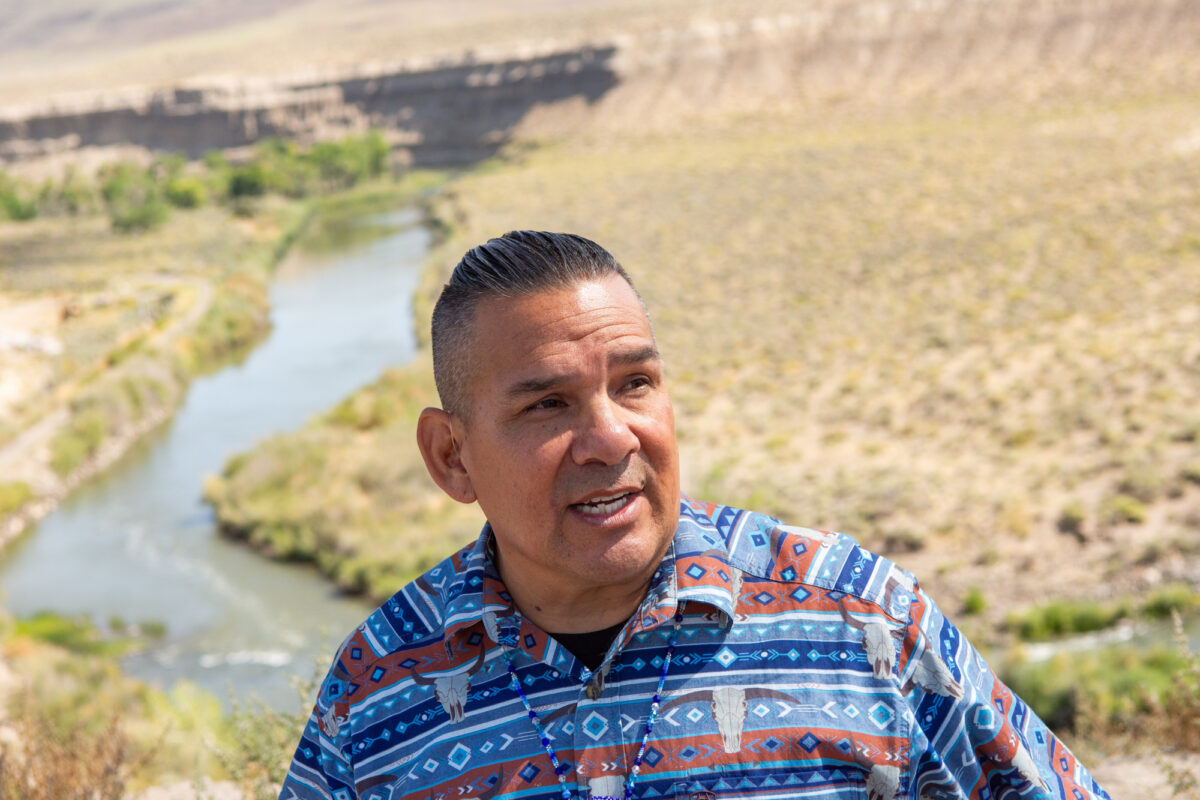
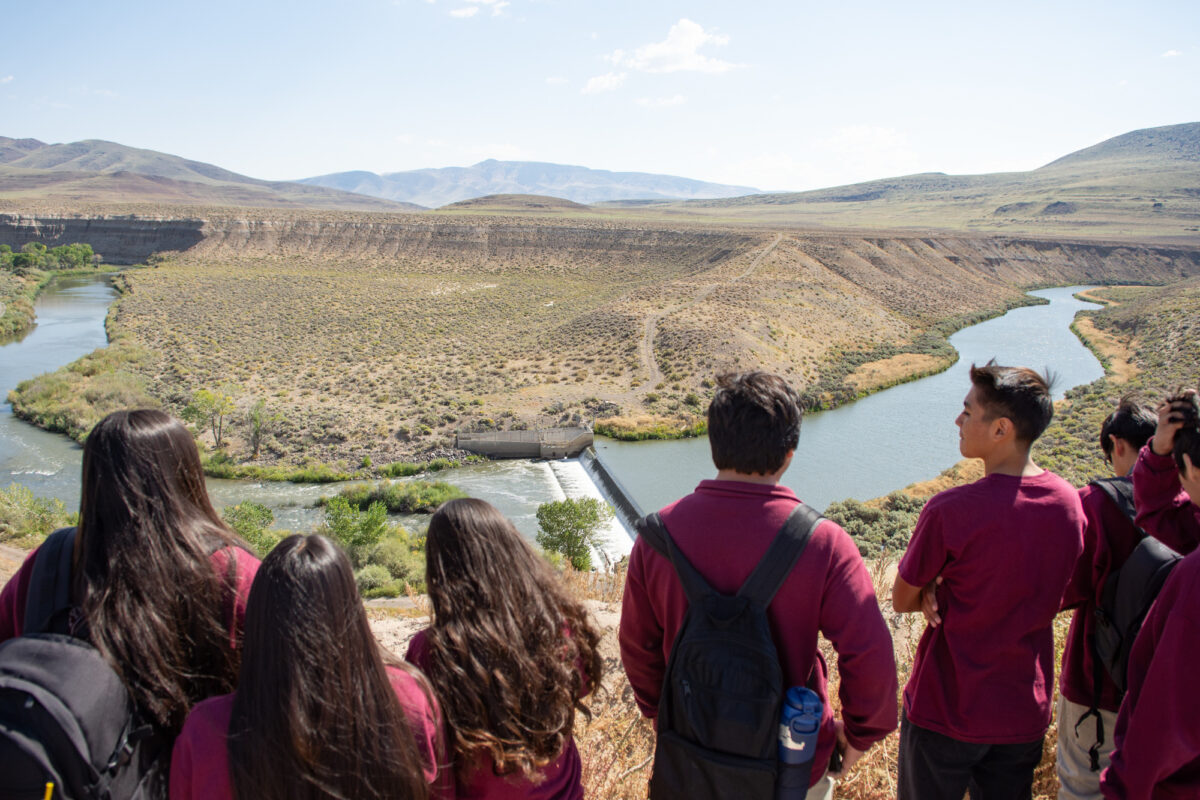
The endangered cui-ui and threatened Lahontan cutthroat trout rely on specific conditions to reach their historic spawning grounds in parts of the Truckee River upstream of Pyramid Lake. But a century of man-made diversions and dams on the river have crippled habitat for the fish.
Beginning in the early 1900s, not long after Congress passed the Newlands Reclamation Act of 1902 — named for Nevada Sen. Francis Newlands — federal officials began pursuing the construction of a major irrigation project on the river. The resulting project, also named for Newlands, diverted part of the river’s flows at Derby Dam to irrigated fields in the Fallon area.
The Newlands Project vastly shrunk spawning habitat for both fish species. Lahontan cutthroat trout, before the construction of Derby Dam, could migrate 100 miles up the river to Lake Tahoe and tributaries flowing into the Truckee watershed. But the dam’s presence blocked trout from moving past it. The reduced flows and changing hydrology created additional barriers for the movement of cui-ui, with increased erosion, sediment issues and the formation of a larger delta.
At the time that water rights were determined on the Truckee River, the Pyramid Lake Paiute Tribe received water rights for irrigation. But despite the cultural and spiritual importance of fish species, the tribe did not receive sufficient water to keep the lake stable or maintain a thriving environment for cui-ui and Lahontan cutthroat trout. Decades later, in the early 1980s, the U.S. Supreme Court rejected the federal government and tribe’s claims to reassert this water claim.
However, through decades of litigation, agreements and settlements, the Pyramid Lake Paiute Tribe has effectively advocated to bring more water to the lake, restore habitat upstream and work to recover the two imperiled species through its fisheries program.
Though only five of 71 Lahontan cutthroat trout populations are considered resilient, according to a recent report, some of the most stable populations are managed by the Pyramid Lake Paiute Tribe and Summit Lake Paiute Tribe, as the Nevada Current reported earlier this year.
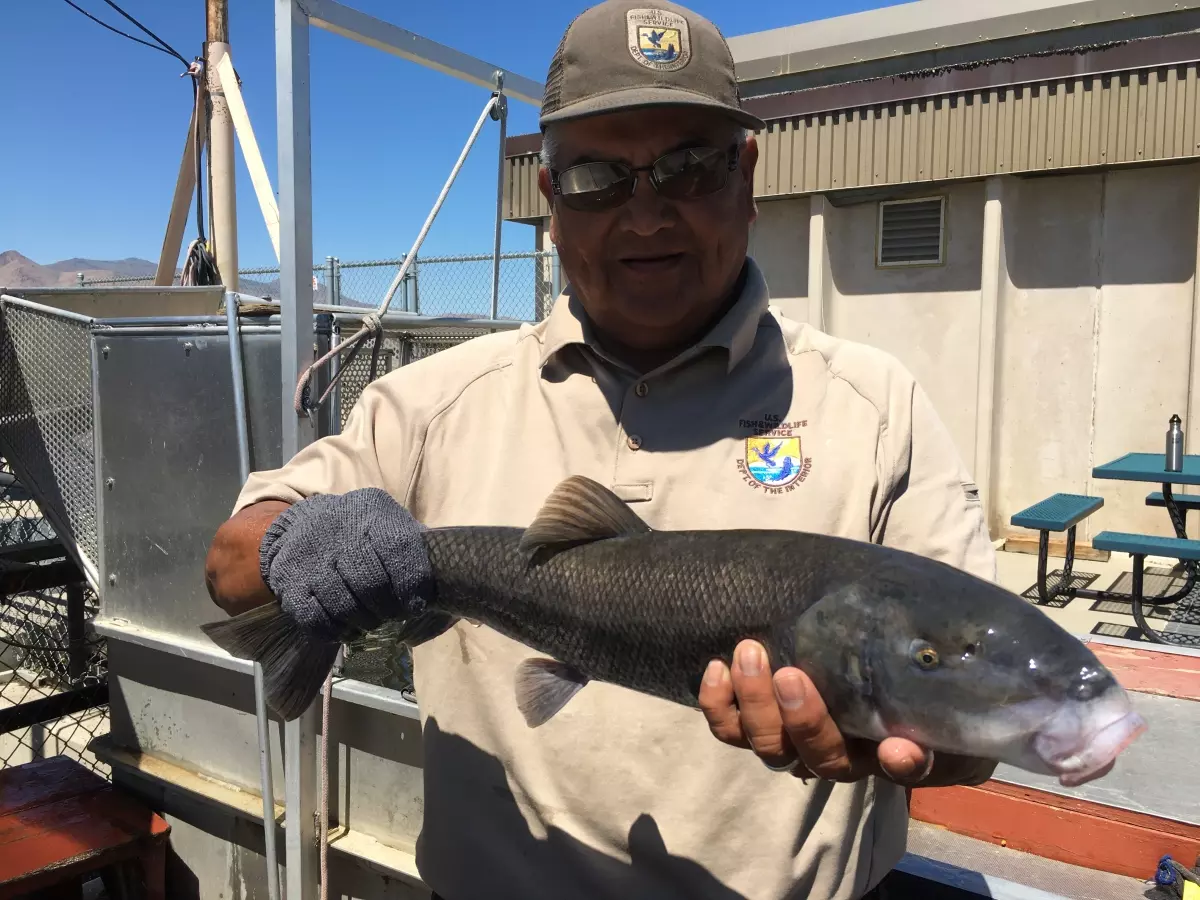
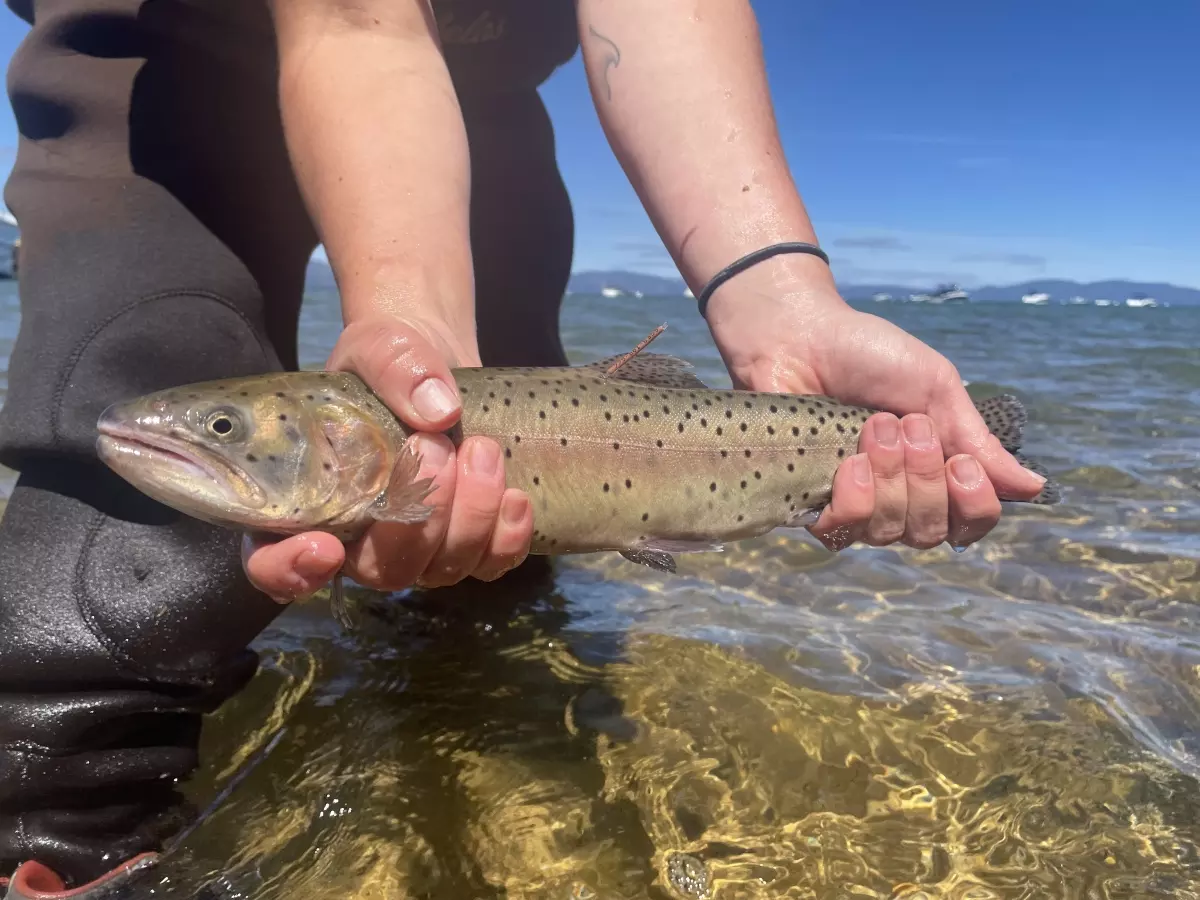
The $8.3 million fish passage project at Numana Dam — about 15 miles from the lake on tribal land — falls into that effort. Similar to Derby Dam, it is a barrier to the natural migration of fish.
“I believe this is the single largest project we have funded in the last couple of years,” Deputy U.S. Fish and Wildlife Service Director Siva Sundaresan said after the event, referring to the fish passage. “Most other projects range from a few $100,000 to sometimes a couple of million.”
Under the current design for the Numana Dam, large numbers of cui-ui are unable to pass at the same time. Lisa Heki, project leader for Lahontan National Fish Hatchery complex with the U.S. Fish and Wildlife Service, said the new rock ramp will be designed specifically for “cui-ui swimming capacity and speed.” The ramp will provide cascading steps for the fish to cross.
“This is an important watershed connectivity point,” Heki said.
The next barriers for fish sit 65 miles upstream near the California border. These structures are used by the Truckee Meadows Water Authority — the municipal purveyor for Reno and Sparks — but Heki said “there are some retrofit designs and planning already in place” to improve fish passage.
Upstream habitat is especially important for Lahontan cutthroat trout’s migration, she said, noting that fish populations in Pyramid Lake and Lake Tahoe were historically connected.
“There was genetic exchange” between the trout, she said. “That’s critically important. So those perennial waters up in the Sierras will be important spawning and rearing habitat into the future.”
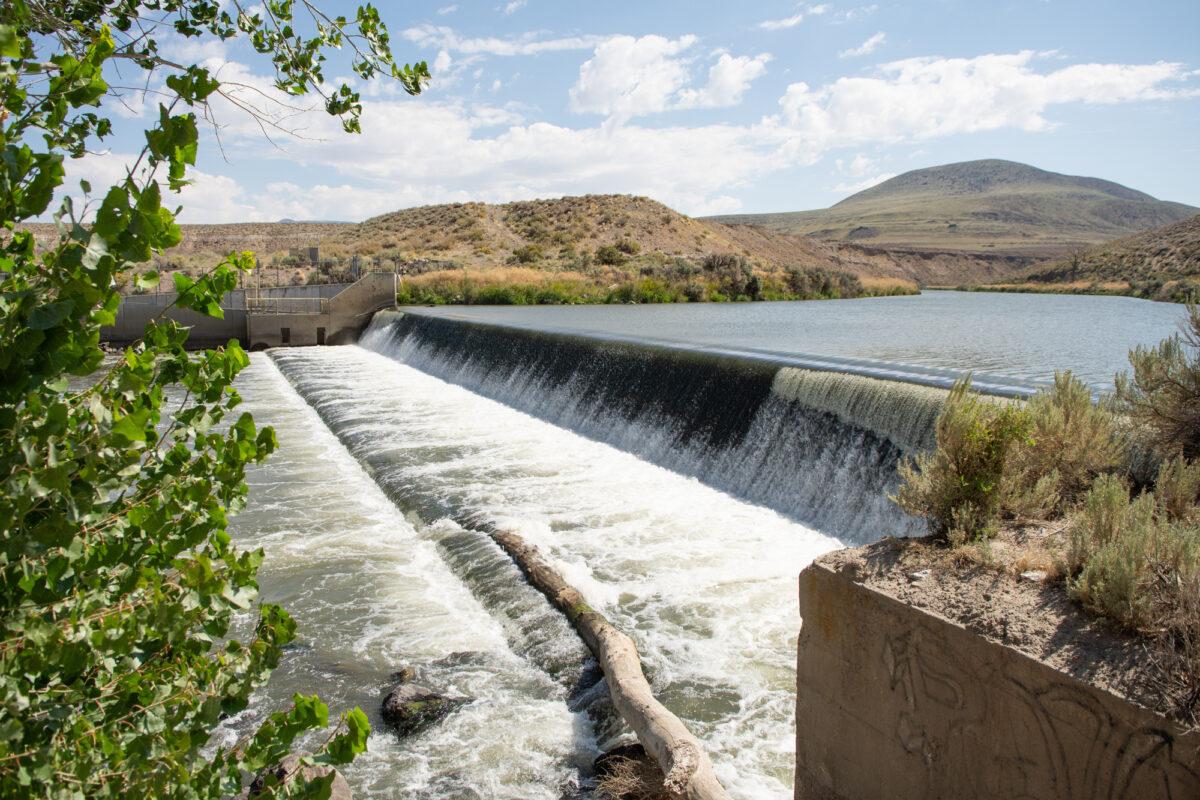
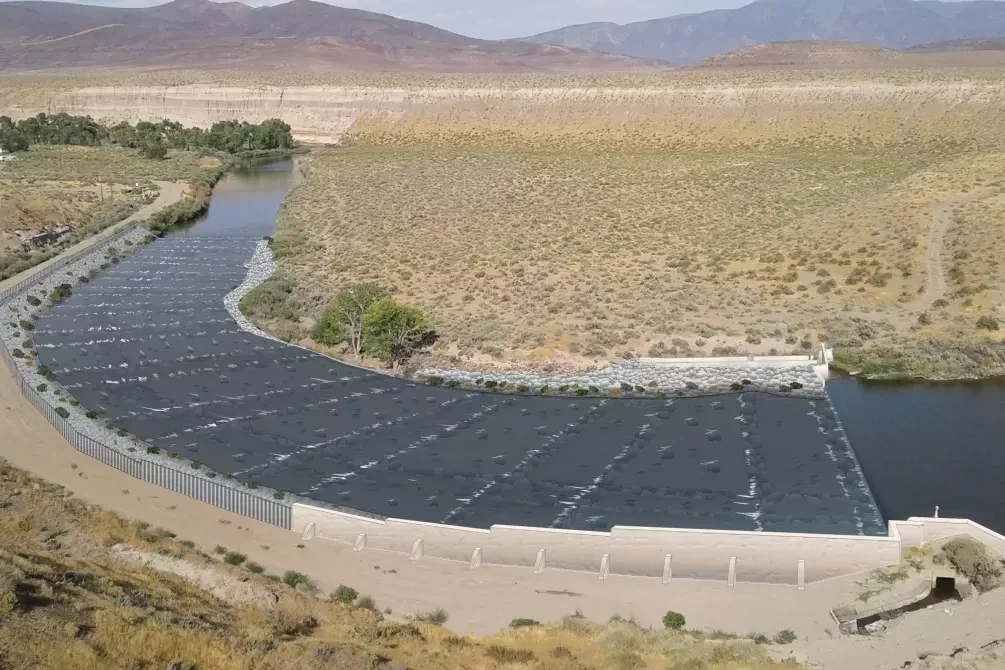
Phoenix said there is still more work to be done to restore habitat. He stressed the importance of upstream and downstream restoration that improves riparian areas along the Truckee River's banks.
“A lot of the dirt keeps coming in, the sediment keeps coming in,” Phoenix told reporters after the event. “We’re trying to restore that so we keep the banks open and the water flowing.”
The Pyramid Lake Paiute Tribe continues to pursue legal claims to bring more water to the lake, restoring inflows that were cut off by the Newlands Project. Earlier this year, the tribe sued the federal government, alleging that it breached a settlement agreement to transfer water once used by the Fallon Naval Air Station back to the lake. Phoenix did not comment on the litigation.
In a legal complaint filed in July, attorneys for the tribe wrote that “today, the preservation of the cui-ui and [Lahontan cutthroat trout], and Pyramid Lake generally, continues to depend primarily on the maintenance of sufficient flows of water in the Truckee River and ultimately into the lake.”
